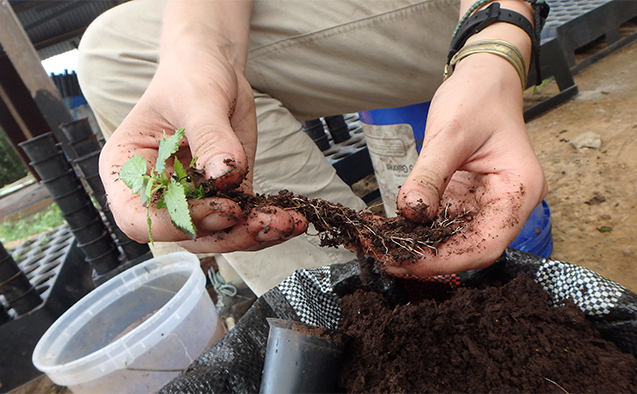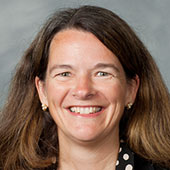
An indigenous farming technique that’s been around for thousands of years provides the basis for restoring rain forests stripped clear of trees by gold mining and other threats.
A carbon-based soil amendment called biochar is a cheap and effective way to support tree seedling survival during reforestation efforts in the Amazon rain forest, according to new research from Wake Forest University’s Center for Amazonian Scientific Innovation (CINCIA).
Restoring and recovering rain forests has become increasingly important for combatting climate change, since these wide swaths of trees can absorb billions of tons of carbon dioxide each year. The problem is particularly acute in areas mined for alluvial gold deposits, which devastate not only rain forest trees but also soils. High costs can be a huge barrier to replanting, fertilizing and nurturing trees to replace those lost in the rain forest.
The scientists found that using biochar combined with fertilizer significantly improved height and diameter growth of tree seedlings while also increasing the number of leaves the seedlings developed. The experiment, based in a Peruvian Amazon region called Madre de Dios, the heart of illegal gold mining trade in that country, used two tropical tree species: the fast-growing Guazuma crinita and Terminalia amazonia, a late successional tree often used as timber.
“The most difficult period in a tree seedling’s life is the first few months after transplanting,” said Miles Silman, CINCIA associate director of science and Wake Forest’s Andrew Sabin Presidential Chair of Conservation Biology.
“But just a little bit of biochar does wonderful things to the soil, and it really shines when you add organic fertilizer.” Miles Silman, Wake Forest biology professor and CINCIA associate director of science
The CINCIA scientists make biochar out of Brazil nut husks discarded by large-scale processors in Peru. They burn the husks slowly in 55-gallon barrels, a low-tech, inexpensive and easily scalable method for producing biochar.

The study, “Biochar effects on two native tropical tree species and its potential as a tool for reforestation,” appears online this month in the peer-reviewed journal Forests. Until this study, little was known about whether biochar could benefit tree growth in tropical tree seedlings.
“We show that while both biochar and fertilizer can improve tree seedling growth, combining them makes seedlings thrive beyond either amendment alone,” said Silman.
The native peoples of the Amazon created “dark earths” using biochar thousands of years ago, and those soils are still productive today.
Biochar’s benefits are many:
- It improves the soil’s ability to hold water and makes it less acidic.
- It provides a welcoming habitat for microbes, which support plant growth.
- It holds onto fertilizer and releases it over time, decreasing the need for repeat applications of fertilizer, which cuts labor and supply costs.
The scientists used soils recovered from the San Jacinto native community, where gold mining has ravaged the land. Silman explained that the dirt that comes from the mining sluice is devoid of the organic matter and microbes that supports plant life.
“These are the kinds of landscapes we have to recover, and we are still trying to determine how to grow plants in them,” he said. “This soil is extremely limiting for natural regrowth, but treating them with biochar turns it into something that plants can grow in. That’s good for biodiversity and good for the people that have to make a living from the land.”
Producing biochar
This video produced by CINCIA for its Spanish-language outreach efforts shows how scientists at the Amazon rain forest research center make a soil amendment called biochar from substances such as Brazil nut husks, cocoa shells and even sawdust.
Wake Forest in Peru
- How a team of scientists is trying to help save the Peruvian rain forest from the devastation of artisanal-scale gold mining.
- Students embrace a rare opportunity to experience one of the wildest places on Earth, where science guides their study of the Peruvian Amazon.
- Innovative, drone-driven research shows that rain forest destruction from artisanal gold mining has hit an all-time high in Peru, devastating 30 percent more forested land than previously reported.
Categories: Faculty, Research, Top Stories




